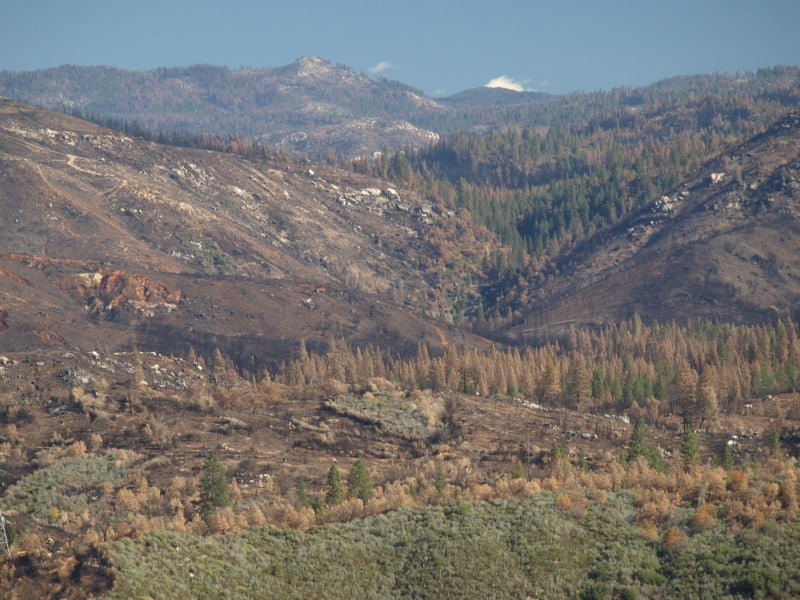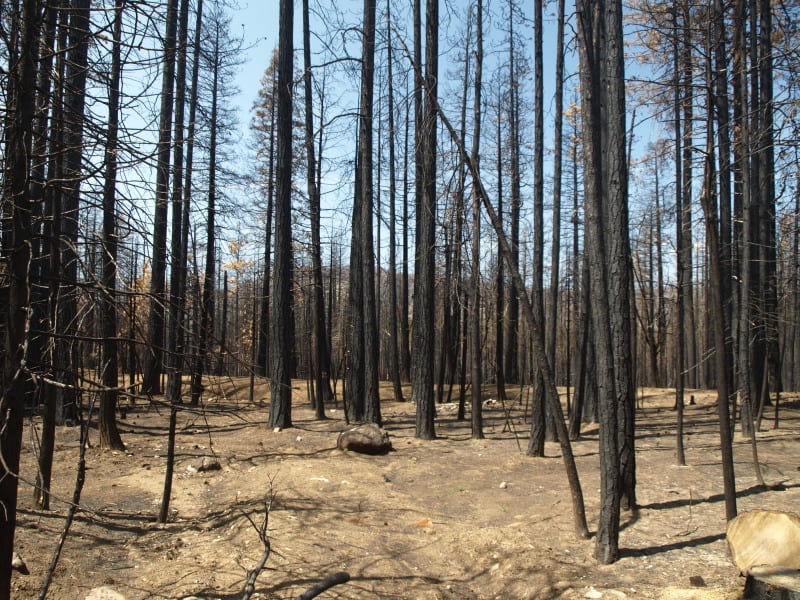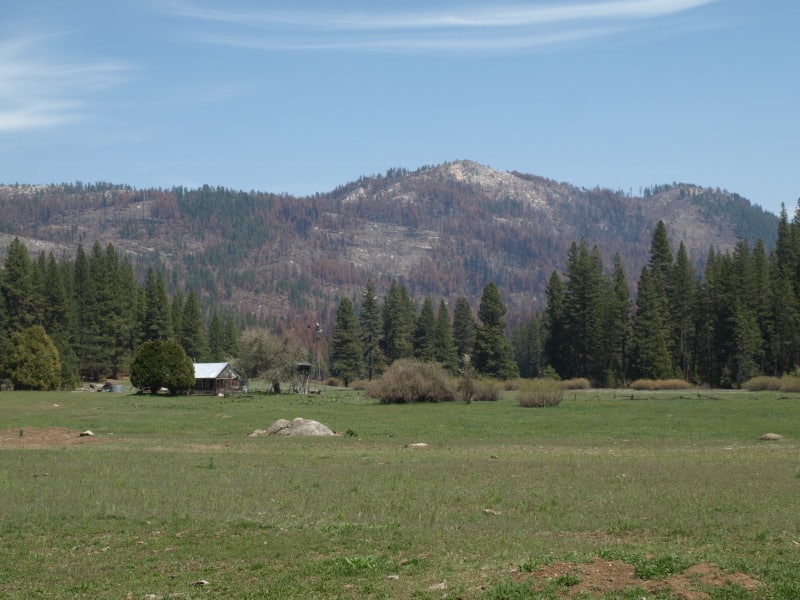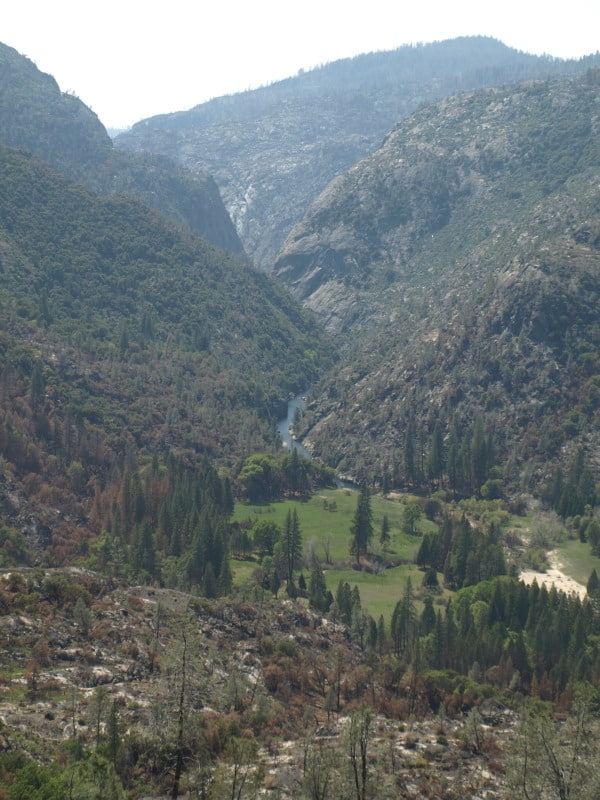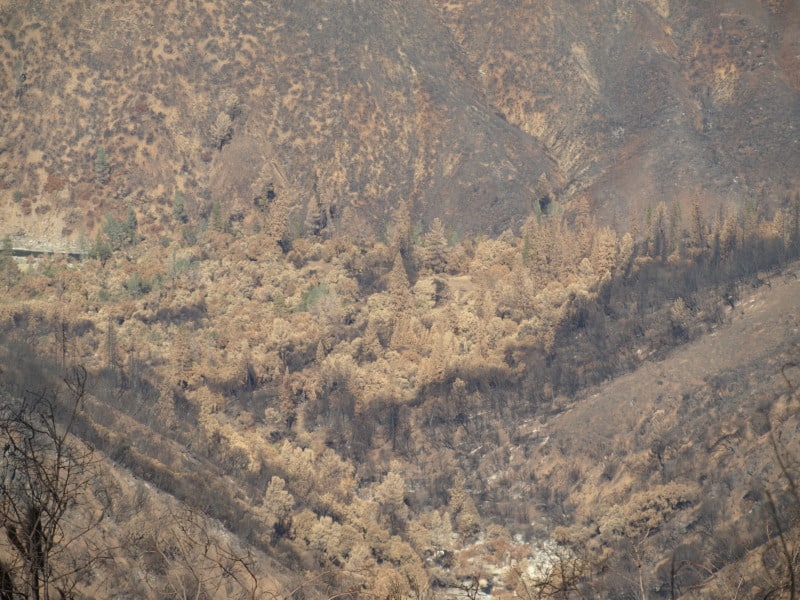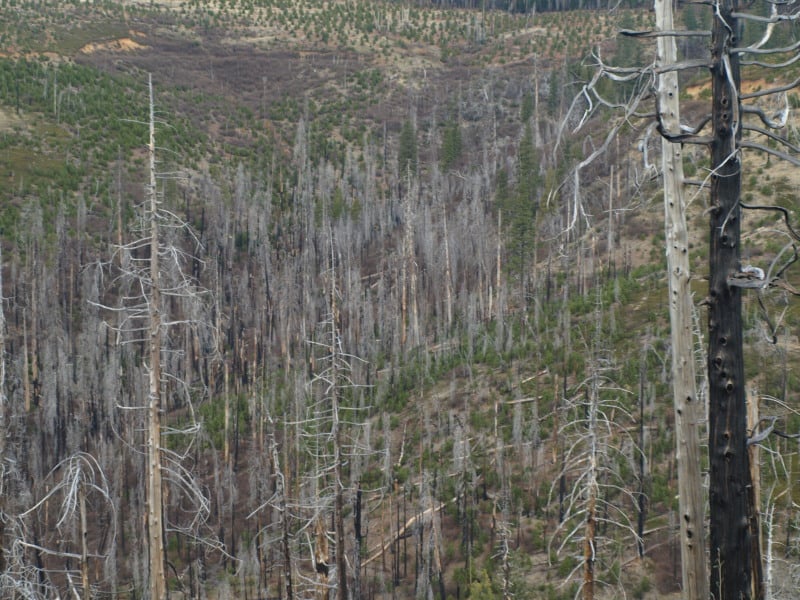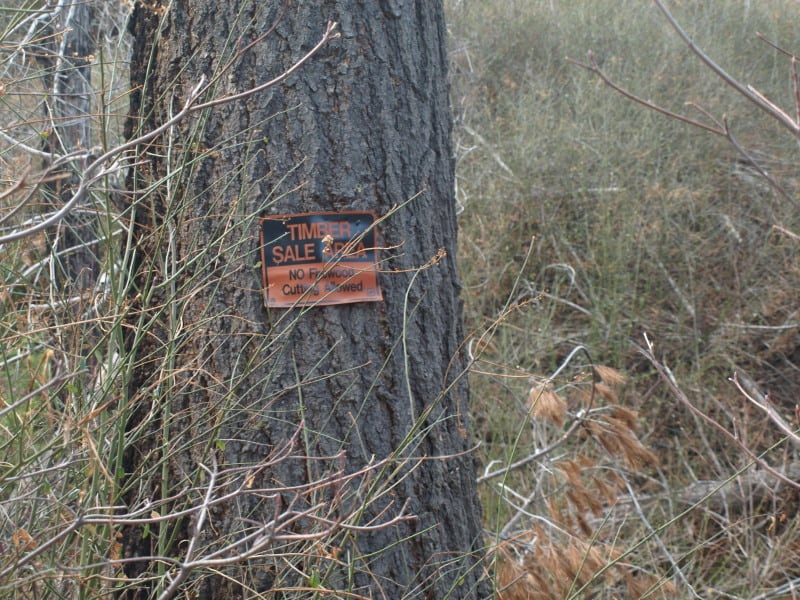Please consider this article from E&E a companion to this February 10th post on this blog. – mk
WILDFIRE: Study questions U.S. policy of forest ‘restoration’
By Phil Taylor, E&E reporter, 2/14/14
Western forests today experience fewer high-severity wildfires than they did more than a century ago, depriving some fire-dependent species and stifling biodiversity, according to a new study.
The study challenges conventional wisdom held by politicians and the Forest Service that the West is experiencing an unnatural burst in uncharacteristic wildfires as a result of a century of wildfire suppression.
In fact, some Western forests are experiencing a “deficit” in high-intensity blazes and in some cases should be encouraged to burn, said the study published this month in the journal PLOS ONE.
It questioned the government’s policy of mechanically thinning, or “restoring,” backcountry areas to ensure fires stay low to the ground and create “park-like” conditions. Thinning to reduce high-severity wildfire can reduce habitat for the imperiled black-backed woodpecker, often requires new roads and can introduce invasive species into the forest, the study authors said.
It’s bound to spark some controversy considering high-severity wildfires threaten lives and property and drain billions of dollars in taxpayer money each year. Moreover, aggressive forest thinning and restoration policies are politically popular because they create rural jobs and seek to mitigate wildfire threats to communities.
“Given societal aversion to wildfires, the threat to human assets from wildfires, and anticipated effects of climate change on future wildfires, many will question the wisdom of incorporating historical mixed-severity fire into management goals,” the study said. “However, a major challenge lies with the transfer of information needed to move the public and decision-makers from the current perspective that the effects of contemporary mixed-severity fire events are unnatural, harmful, inappropriate and more extensive due to fire exclusion — to embrace a different paradigm.”
The study was funded by Environment Now, a nonprofit foundation in California whose goals include “preserving and restoring coastal, freshwater and forest ecosystems.”
It was independently conducted by 11 scientists from several Western universities, the Canadian Forest Service, the Earth Island Institute and Geos Institute.
The study used U.S. Forest Service data and other published sources to explore the historical prevalence of “mixed-severity fire regimes” in ponderosa pine and mixed-conifer forests in western North America and to try to determine whether mixed-severity fire patterns in those forests had changed as a result of the past century of fire suppression.
On the latter question, it concluded that the past century of fire suppression has not “greatly increased the prevalence of severe fire,” even though fuel levels in Western forests are believed to be much higher.
Since 1930, the rate of young forest establishment fell by a factor of four in the Sierra Nevada and Southwest, by a factor of three in the Klamath, and by half in the eastern Cascades and central and northern Rockies, it said.
The study recommends the government focus its fire mitigation work adjacent to homes in the wildland-urban interface instead of in the backcountry, where managed wildland fires could promote ecological benefits.
“The need for forest ‘restoration’ designed to reduce variation in fire behavior may be much less extensive than implied by many current forest management plans or promoted by recent legislation,” the study said. “Incorporating mixed-severity fire into management goals, and adapting human communities to fire by focusing fire risk reduction activities adjacent to homes, may help maintain characteristic biodiversity, expand opportunities to manage fire for ecological benefits, reduce management costs, and protect human communities.”
But other scientists and policymakers have argued that the societal benefits of taming mega-fires often trump whatever ecological benefits they may produce. In addition, climate change is expected to intensify droughts that create dangerously dry fuel conditions. Fire seasons are more than two months longer than in the 1970s, the Forest Service has said. (Editor’s note: using 1970s as the starting point is disingenuous–the 1950s-1980s were cooler and moister)
A study commissioned by the Interior Department and led by Northern Arizona University last spring found that although hazardous fuels treatments near communities can reduce wildfire risks to homes and people, backcountry fuels treatments are important to prevent mega-fires that can scorch watersheds and drain federal wildfire budgets (E&ENews PM, May 28, 2013).
While fire in the backcountry can be beneficial if it stays low to the ground, landscape-scale “crown” fires can damage watersheds, tarnish viewsheds and threaten communities, NAU’s Diane Vosick, one of the study authors, said last spring.
“In order to get ahead of the cost of large and severe fire, more treatments will be needed outside the wildland-urban interface,” Vosick told the Senate Energy and Natural Resources Committee last June.
The Forest Service and Interior Department also face political pressure to restore backcountry areas.
In December 2011, Congress inserted language in its appropriations report ordering both agencies to halt policies that direct most hazardous fuels funding to the wildland-urban interface, spending it instead on the “highest priority projects in the highest priority areas.”
For now, “restoration” across the National Forest System remains popular policy in Congress and in Western states.
According to the Forest Service, the states of Florida, Georgia, Utah, California, Texas, Arizona, New Mexico and Colorado have all experienced their largest or most destructive wildfire in just the last several years. Wildfires burn twice as many acres annually compared with the 1970s, and the number of wildfires annually that cover more than 10,000 acres has increased sevenfold.
Forest Service Chief Tom Tidwell last week told Congress there are nearly two dozen landscape-scale collaborative forest restoration projects underway that seek to “re-establish natural fire regimes and reduce the risk of uncharacteristic wildfire.”
“Our findings are sure to be controversial as each year federal agencies spend billions of dollars in fuel reduction costs in the backcountry based on the assumption that we have more high-severity fire now than we did historically,” said Dominick DellaSala, chief scientist at the Geos Institute, one of the study’s authors. “Fuel treatments are best targeted immediately adjacent to where people live, given that the increasing costs of suppressing fires is not ecologically justifiable and may, in fact, produce artificially manipulated landscapes that need more fire to remain healthy and productive.”
